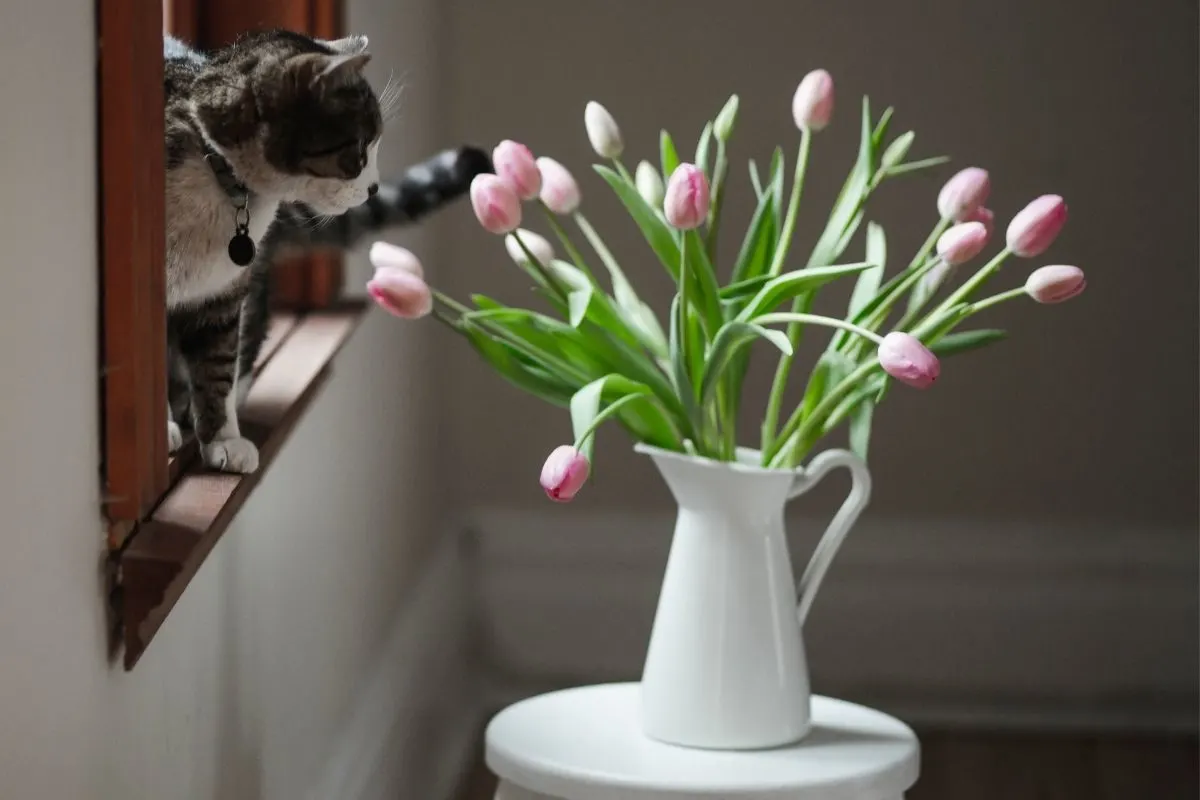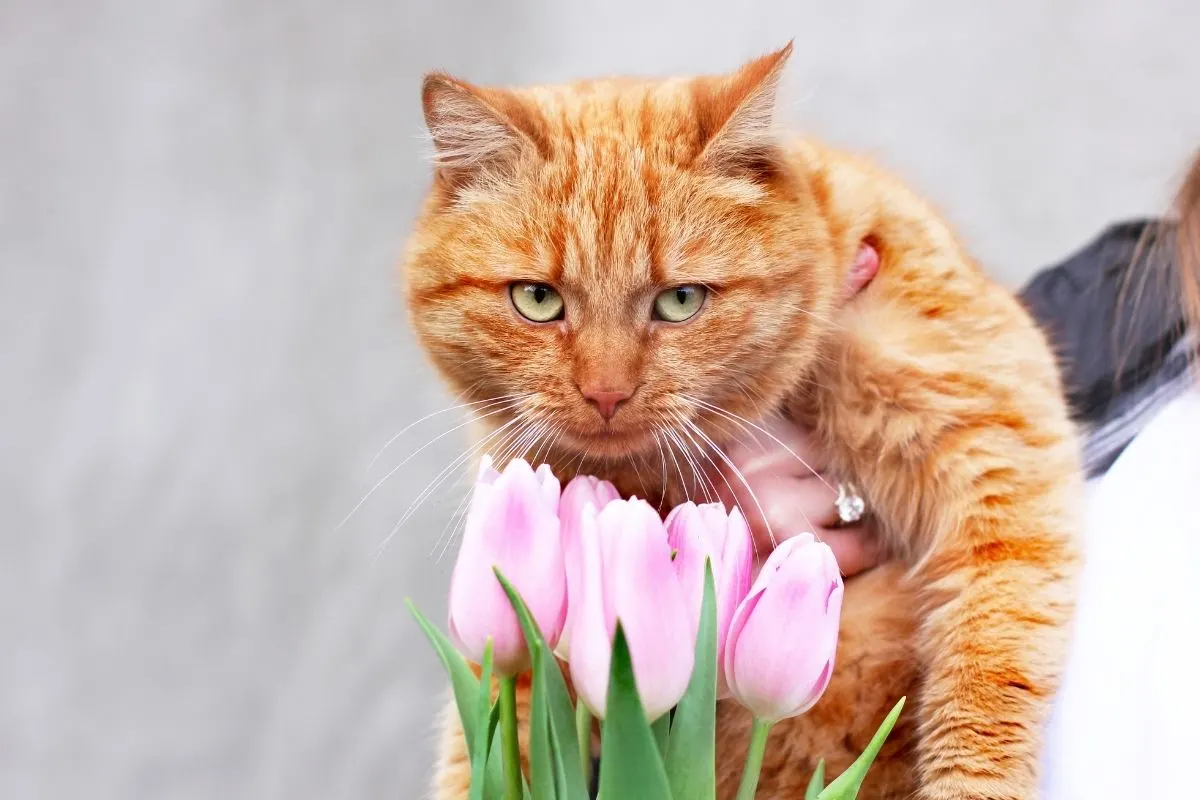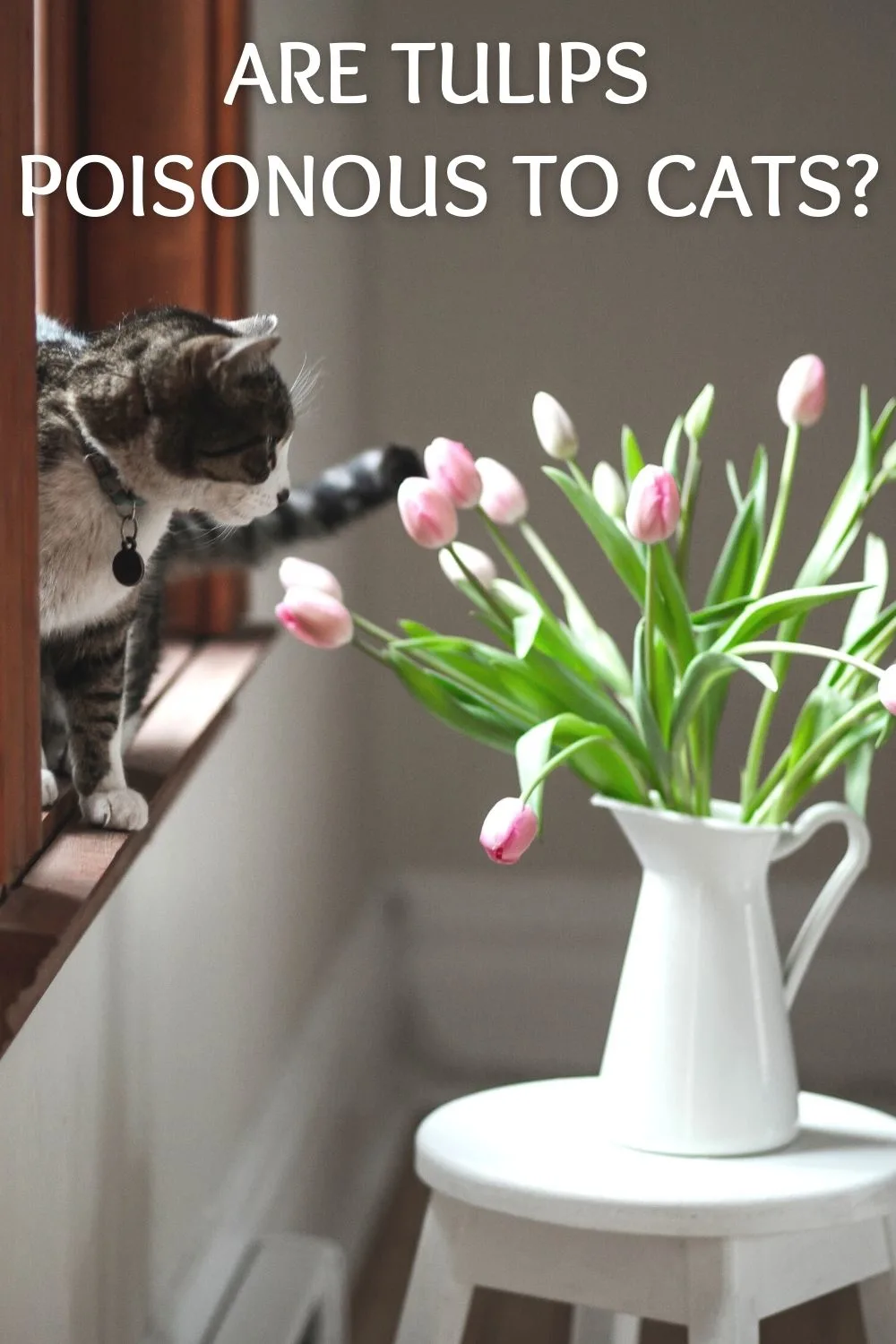Do you have tulips in your yard? Most of us are happy to see them popping up in our yards in the spring, but are tulips poisonous to cats? We may enjoy the color show they put on every year, but did you know that tulips can be dangerous to your furry friends?
That’s right – tulips are poisonous to cats. If your cat happens to take a nibble on a tulip, it may experience symptoms such as vomiting, diarrhea, and drooling. In severe cases, tulip poisoning can even lead to organ damage or death.

So, if you have a cat at home, it’s best to keep them away from tulips – and any other flowers or plants that may be harmful.
How to Recognize Tulips

Spring is tulip season, and these colorful flowers are a welcome sight after a long winter. But how can you tell a tulip from other flowers? There are over 3,000 tulips varieties and recognizing them can be daunting for even the most experienced gardener. However, there are a few key characteristics that can help you to identify tulips.
- tulips have six petals, which are arranged in symmetrical patterns
- the tulip’s stem is usually straight, and the leaves are narrow and strap-like
- they come in a wide range of colors, including red, yellow, pink, and white.
- when tulips bloom, the flowers open up during the day and close at night
By keeping these characteristics in mind, you’ll be able to spot tulips wherever you see them!
Related: plants that are poisonous to cats
Why Are Tulips Toxic to Cats?

The tulip plant contains a compound called tulipalin A, which is poisonous to cats. When tulips are eaten, tulipalin A can cause vomiting, diarrhea, and depression in cats. In severe cases, tulipalin A can cause kidney damage and even death.
Fortunately, most cats will avoid tulips if given the choice, but it’s important to be aware of the risks if you have a cat that likes to nibble on plants. As pet parents, we have a duty to keep our cats safe at all times, as they depend on us. This means it’s better to be safe than sorry when it comes to tulips and your cats.
Signs of Tulip Poisoning in Cats
Tulips are one of the most popular flowers in the world, and they’re also a common source of poisoning in cats. Cats are attracted to the tulip’s nectar, and they will often chew on the tulip’s leaves and stem.
Unfortunately, tulips contain toxins that can cause gastrointestinal upset in cats. The most common symptoms of tulip poisoning include vomiting, diarrhea, and abdominal pain. In severe cases, tulip poisoning can lead to kidney damage or even death.
Here are some symptoms of tulip poisoning:
- Cardiac arrhythmias
- Labored breathing
- Rapid heart rate
- Loss of appetite
- Gastrointestinal distress
- Vomiting
If you suspect that your cat has ingested tulip, it’s important to take them to the vet immediately. With prompt treatment, most cats recover from tulip poisoning without any lasting effects.
Treatment of tulip poisoning in cats
If your cat has taken a nibble out of your tulips, don’t panic! While tulip poisoning is serious, it can be treated if caught early. The first thing you should do is call your vet. They will likely ask you to bring your cat in for an examination and may recommend giving them some IV fluids to flush the tulip toxins out of their system.
Proper veterinary care will usually include at least an overnight at the vet and extra fluids.
If your cat is displaying any symptoms of tulip poisoning, such as drooling, vomiting, or diarrhea, it’s important to act quickly. Once the tulip toxins have been removed from your cat’s system, they should make a full recovery.
When to call the vet
It’s best to contact the vet as soon as you know or suspect your cat has ingested tulip. Quick action saves lives and will also reduce the suffering your cat has to go through. Your vet will know how to see the clinical signs of poisoning and take quick action.
How to Prevent Tulip Poisoning in Cats
The best prevention is always to avoid bringing any tulips into your home in the first place. If your cats have no access to the plant, there’s no worry that they will eat them.
What to do if your cat eats plants
Some cats love to chew on plants. If yours is a plant nibbler, it’s essential you make sure none of your plants are toxic and that you don’t bring any toxic plants into your home. You can also put your plants in a room that is off-limits to your cat (but be sure she doesn’t sneak in) or you can cage them in to keep them away from your cat.
You could also try cat grass or a similar safe cat plant to distract your cat from your houseplants.
If you love tulips, but want to keep your kitty safe, enjoy these tulip coloring pages.
Are Tulips Poisonous to Cats? – Conclusion
As you can see, tulips are poisonous to cats and responsible cat owners must ensure their cats cannot have access to this toxic plant. While they have beautiful flowers, they can harm your furry feline. There’s no way to be 100% safe other than not bringing tulips into your home at all.
If your cat is strictly an indoor-only cat, then you should be okay to keep tulips outside the home, as long as he doesn’t get out and then try to eat them. It’s always better to be safe than to take a risk on your cat’s health.


